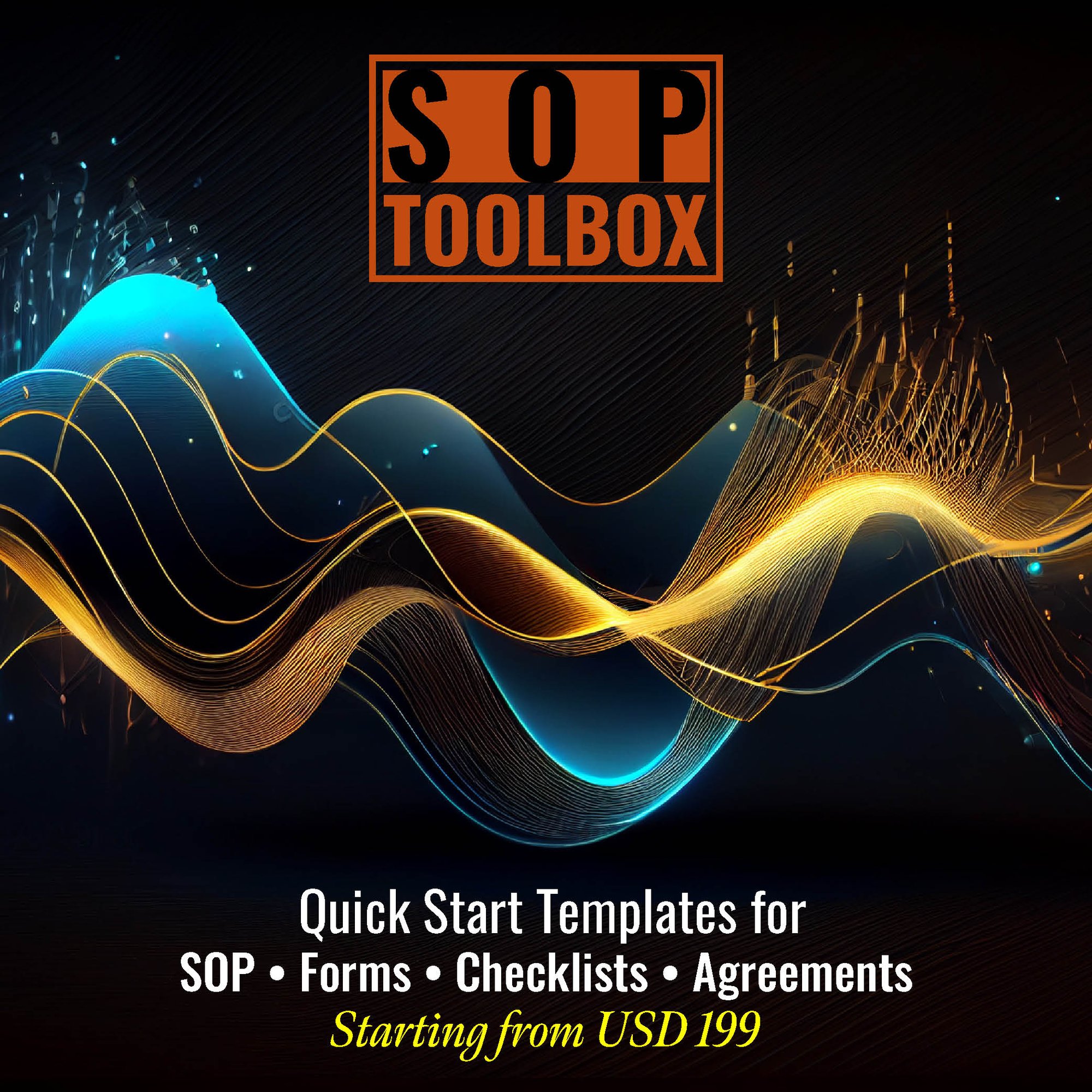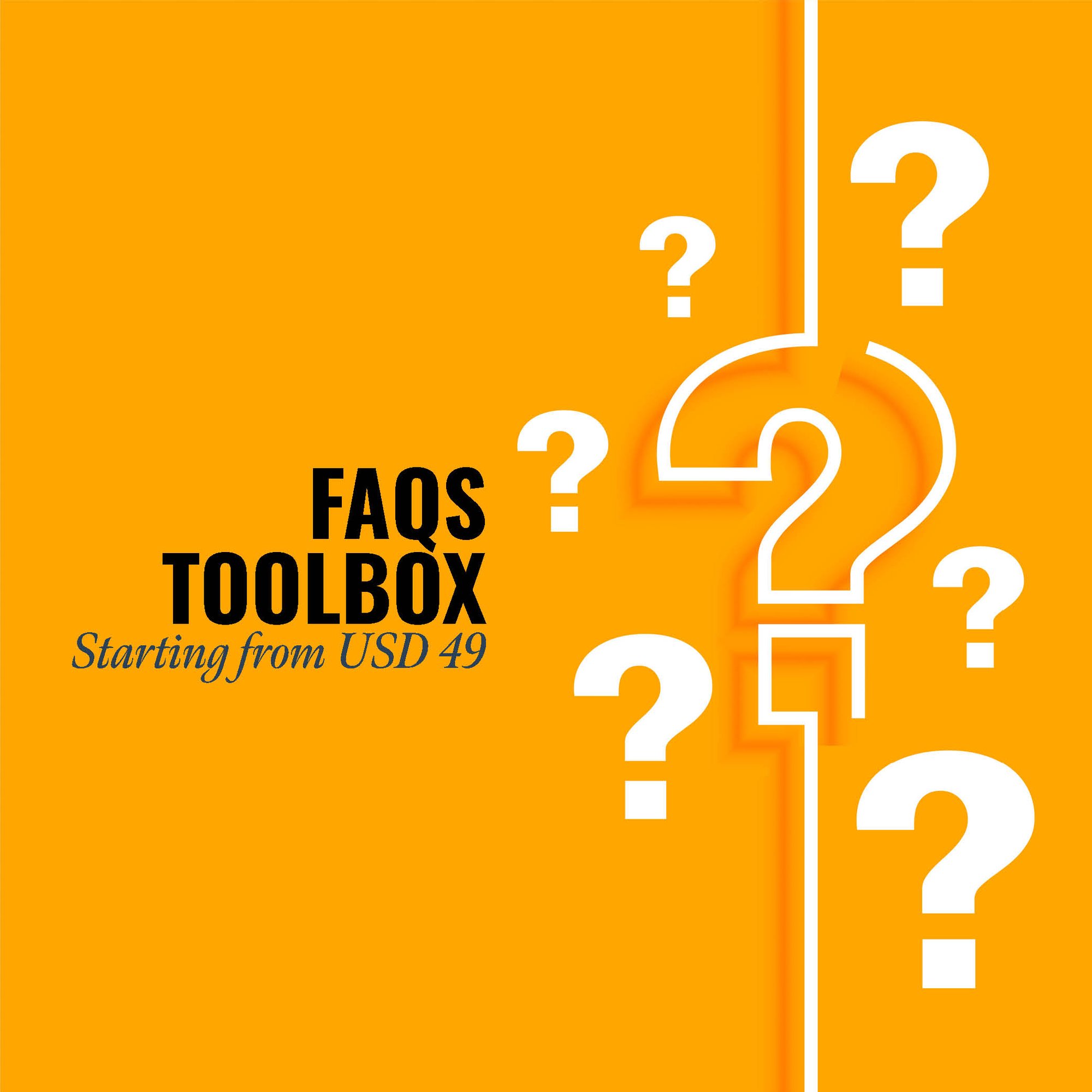The "Geophysical Surveying and Mapping Services, SOP (Standard Operating Procedure) Manual" holds profound significance in the geospatial industry, guiding professionals through systematic and standardized processes. This manual plays a pivotal role in ensuring accuracy, reliability, and safety in geophysical surveying and mapping operations. By outlining precise procedures for data collection, analysis, and interpretation, it enhances the consistency of results, promoting high-quality mapping outputs. Additionally, the manual serves as a crucial resource for training new personnel, fostering a skilled workforce. It addresses safety protocols, minimizing risks associated with fieldwork and equipment operation. Furthermore, adherence to standardized procedures facilitates regulatory compliance and quality assurance. In the rapidly evolving field of geophysics, an SOP manual is indispensable for maintaining industry standards, improving efficiency, and contributing to the overall precision and credibility of geophysical surveying and mapping services.
CLICK HERE to download the List of SOPs Document in PDF format. Please share this document with your clients, colleagues and senior officers.
Top 50 Standard Operating Procedures (SOPs) for Geophysical Surveying and Mapping Services
SOP-597-001: Standard Operating Procedure for Geophysical Survey Planning
SOP-597-002: Standard Operating Procedure for Equipment Calibration
SOP-597-003: Standard Operating Procedure for Site Selection Criteria
SOP-597-004: Standard Operating Procedure for Survey Instrument Setup
SOP-597-005: Standard Operating Procedure for Data Collection Protocols
SOP-597-006: Standard Operating Procedure for Quality Control Checks
SOP-597-007: Standard Operating Procedure for Magnetic Survey Techniques
SOP-597-008: Standard Operating Procedure for Ground Penetrating Radar (GPR) Surveys
SOP-597-009: Standard Operating Procedure for Seismic Survey Methodology
SOP-597-010: Standard Operating Procedure for Electromagnetic (EM) Survey Techniques

SOP-597-011: Standard Operating Procedure for Gravity Survey Procedures
SOP-597-012: Standard Operating Procedure for Remote Sensing Data Integration
SOP-597-013: Standard Operating Procedure for GPS/GNSS Data Acquisition
SOP-597-014: Standard Operating Procedure for Surveyor Safety Protocols
SOP-597-015: Standard Operating Procedure for Survey Data Processing
SOP-597-016: Standard Operating Procedure for Interpretation Software Usage
SOP-597-017: Standard Operating Procedure for Geological Data Integration
SOP-597-018: Standard Operating Procedure for Topographic Map Incorporation
SOP-597-019: Standard Operating Procedure for Bathymetric Survey Techniques
SOP-597-020: Standard Operating Procedure for Reporting and Documentation
SOP-597-021: Standard Operating Procedure for Environmental Impact Assessment
SOP-597-022: Standard Operating Procedure for Hazard Mitigation Planning
SOP-597-023: Standard Operating Procedure for Client Communication
SOP-597-024: Standard Operating Procedure for Project Management
SOP-597-025: Standard Operating Procedure for Surveyor Training
SOP-597-026: Standard Operating Procedure for Equipment Maintenance
SOP-597-027: Standard Operating Procedure for Data Storage and Archiving
SOP-597-028: Standard Operating Procedure for Surveyor Collaboration
SOP-597-029: Standard Operating Procedure for Geodetic Control Integration
SOP-597-030: Standard Operating Procedure for Unmanned Aerial Vehicle (UAV) Surveys

SOP-597-031: Standard Operating Procedure for Soil Sampling Protocols
SOP-597-032: Standard Operating Procedure for Groundwater Monitoring Procedures SOP-597-033: Standard Operating Procedure for Radiometric Survey Techniques
SOP-597-034: Standard Operating Procedure for Seafloor Mapping
SOP-597-035: Standard Operating Procedure for Geological Hazard Assessment
SOP-597-036: Standard Operating Procedure for Marine Geophysics
SOP-597-037: Standard Operating Procedure for Pipeline Route Selection
SOP-597-038: Standard Operating Procedure for Urban Planning Support
SOP-597-039: Standard Operating Procedure for Archaeological Site Investigation
SOP-597-040: Standard Operating Procedure for Geological Resource Exploration
SOP-597-041: Standard Operating Procedure for Emergency Response Planning
SOP-597-042: Standard Operating Procedure for Coastal Zone Management
SOP-597-043: Standard Operating Procedure for Infrastructure Development Support
SOP-597-044: Standard Operating Procedure for Renewable Energy Site Assessment
SOP-597-045: Standard Operating Procedure for Wildlife Habitat Mapping
SOP-597-046: Standard Operating Procedure for Geospatial Data Security
SOP-597-047: Standard Operating Procedure for Boundary Survey Procedures
SOP-597-048: Standard Operating Procedure for Cross-Sectional Analysis
SOP-597-049: Standard Operating Procedure for Underground Utility Mapping
SOP-597-050: Standard Operating Procedure for Cartographic Map Production
.jpg?width=645&height=337&name=Standard%20Operating%20Procedure%20-%20SOP%20ToolBox%20(1).jpg)
SOP ToolBox: If you are reading these lines, I am sure you are looking for Standard Operating Procedure guidelines or SOPs itself. In both the cases, searching in internet will not be yielding any great help. Because no company shares their SOP Development Process and certainly don’t share their SOP Documents. The best way to develop an SOP is creating one for yourself. At Fhyzics, we write SOPs day-in and day-out for companies across the globe including some of the Fortune 500 organisations. Our charge ranges from USD 5000 to USD 50000 depending upon the number of processes to be covered. Certainly, this is not affordable to small and mid-size organisations. Hence, we decided to create this SOP ToolBox to disseminate our 8-Step SOP Development Life-Cycle and best practices at an unbelievably low price.
I always say, writing an SOP is somewhere between art and science. So far you may be clueless on where to start and how to progress on an SOP? This will not be the case after you diligently go through this SOP ToolBox. We have summarised all our secrets here to get you started and to deliver a stunning SOP to your management.
- Electrical Resistivity:
- Determine the lithology/subsurface structure
- Groundwater resource studies and plume detection
- Monitoring tracer experiments
- Fault mapping
- Archaeological site investigation
- Electromagnetic
- Fault mapping
- Detecting and mapping contaminant plumes
- Mapping buried drums, tanks and metal utilities
- Archaeological site investigation
- Soil mapping
- Mapping lateral change in geology
- Gavity
- Mapping bedrock topography
- Locating voids or cavities
- Formation or pluton boundaries
- Location of faults, buried river channel and fissures
- Monitor aquifer storage change (using time lapse technique)
- Magnetic
- The detection of abandoned mine shaft and adits
- Detection of man made targets such as brick lined shafts or the remains of ancient dwellings
- Location of underground storage tanks and buried steel drums
- Mapping contaminated sediments
- Archaological site investigation
- Seismic
- Depth to water table
- Depth to bedrock
- Subsurface stratigraphy
- Locating palochannels
- Identifying faults and fracture zones.
- Aerial geophysical surveying services
- Electrical geophysical surveying services
- Electromagnetic geophysical surveying services
- Geological surveying services
- Geophysical mapping services
- Magnetic geophysical surveying services
- Radioactive geophysical surveying services
- Remote sensing geophysical surveying services
- Seismic geophysical surveying services
- Surveying services, geophysical
- Association of American State Geologists (AASG).
- The International Association of Geophysical Contractors (IAGC).
- International Airborn Geophysics Safety Association (IAGSA).
- Surveying Prospectors and Developers Association of Canada (SPDAC).
- Ground Geophysical Survey Safety Association (GGSSA).
- International Association of Geodesy (IAG).
- American Association of Petroleum Geologists (AAPG).
- ISO 21414 : 2016
- ISO 9001 : 2015
- ISO 27001 : 2013
- ISO 20000 - 1 : 2011
- ISO 17025 : 2005
- Surveying Journals | www.guides.libraries.psu.edu |
- Surveys in Geophysics | www.springer.com |
- International journal of remote sensing | www.tandonline.com |
- Journal of applied geophysics | www.journals.elsevier.com |
- International journal of geophysics | www.hindawi.com |
Our SOP Templates’ clients are from the following States and Countries:
Alabama, Alaska, Arizona, Arkansas, California, Colorado, Connecticut, Delaware, Florida, Georgia, Hawaii, Idaho, Illinois, Indiana, Iowa, Kansas, Kentucky, Louisiana, Maine, Maryland, Massachusetts, Michigan, Minnesota, Mississippi, Missouri, Montana, Nebraska, Nevada, New Hampshire, New Jersey, New Mexico, New York, North Carolina, North Dakota, Ohio, Oklahoma, Oregon, Pennsylvania, Rhode Island, South Carolina, South Dakota, Tennessee, Texas, Utah, Vermont, Virginia, Washington, West Virginia, Wisconsin, Wyoming.
Afghanistan, Albania, Algeria, Andorra, Angola, Antigua and Barbuda, Argentina, Armenia, Australia, Austria, Azerbaijan, Bahamas, Bahrain, Bangladesh, Barbados, Belarus, Belgium, Belize, Benin, Bhutan, Bolivia, Bosnia and Herzegovina, Botswana, Brazil, Brunei Darussalam, Bulgaria, Burkina Faso, Burundi, Cabo Verde, Cambodia, Cameroon, Canada, Central African Republic, Chad, Chile, China, Colombia, Comoros, Congo (Republic of the), Costa Rica, Croatia, Cuba, Cyprus, Czech Republic (Czechia), Democratic People’s Republic of Korea (North Korea), Democratic Republic of the Congo, Denmark, Djibouti, Dominica, Dominican Republic, Ecuador, Egypt, El Salvador, Equatorial Guinea, Eritrea, Estonia, Eswatini, Ethiopia, Fiji, Finland, France, Gabon, Gambia, Georgia, Germany, Ghana, Greece, Grenada, Guatemala, Guinea, Guinea-Bissau, Guyana, Haiti, Honduras, Hungary, Iceland, India, Indonesia, Iran, Iraq, Ireland, Israel, Italy, Jamaica, Japan, Jordan, Kazakhstan,Kenya, Kiribati, Kuwait, Kyrgyzstan, Lao People’s Democratic Republic (Laos), Latvia, Lebanon, Lesotho, Liberia, Libya, Liechtenstein, Lithuania, Luxembourg, Madagascar, Malawi, Malaysia, Maldives, Mali, Malta, Marshall Islands, Mauritania, Mauritius, Mexico, Micronesia (Federated States of), Moldova, Monaco, Mongolia, Montenegro, Morocco, Mozambique, Myanmar (Burma), Namibia, Nauru, Nepal, Netherlands, New Zealand, Nicaragua, Niger, Nigeria, North Macedonia (formerly Macedonia), Norway, Oman, Pakistan, Palau, Panama, Papua New Guinea, Paraguay, Peru, Philippines, Poland, Portugal, Qatar, Republic of Korea (South Korea), Republic of the Congo, Romania, Russian Federation (Russia), Rwanda, Saint Kitts and Nevis, Saint Lucia, Saint Vincent and the Grenadines, Samoa, San Marino, Sao Tome and Principe, Saudi Arabia, Senegal, Serbia, Seychelles, Sierra Leone, Singapore, Slovakia, Slovenia, Solomon Islands, Somalia, South Africa, South Sudan, Spain, Sri Lanka, Sudan, Suriname, Sweden, Switzerland, Syrian Arab Republic (Syria), Tajikistan, Thailand, Timor-Leste, Togo, Tonga, Trinidad and Tobago, Tunisia, Turkey, Turkmenistan, Tuvalu, Uganda, Ukraine, United Arab Emirates, United Kingdom of Great Britain and Northern Ireland, United Republic of Tanzania, United States of America, Uruguay, Uzbekistan, Vanuatu, Venezuela, Viet Nam, Yemen, Zambia, Zimbabwe.
Fhyzics supports organisations in developing the following documentations:
Standard Operating Procedures (SOPs), Work Instructions, Policies and Procedures, Process Flow Diagrams, Job Descriptions, Training Manuals, Employee Handbooks, Compliance Guidelines, Quality Assurance Manuals, Health and Safety Procedures, Risk Management Plans, Business Continuity Plans, Internal Audit Procedures, Incident Reporting Forms, Performance Management Guidelines, Change Management Procedures, Vendor Management Guidelines, Customer Service Protocols, IT Security Policies, IT Support Documentation, Disaster Recovery Plans, Operational Checklists, Data Management Policies, Confidentiality Agreements, Non-Disclosure Agreements, Employee Onboarding Procedures, Employee Exit Procedures, Performance Appraisal Forms, Employee Code of Conduct, Conflict Resolution Procedures, Product Development SOPs, Supply Chain Management Guidelines, Procurement Guidelines, Inventory Management SOPs, Shipping and Receiving Procedures, Production Scheduling SOPs, Maintenance Procedures, Equipment Calibration Documents, Environmental Compliance Documentation, Sustainability Policies, Customer Feedback Forms, Marketing Strategies, Advertising Guidelines, Brand Management Guidelines, Product Packaging SOPs, Laboratory Testing Procedures, Regulatory Compliance Documentation, Tax and Accounting Procedures, Contract Management Procedures, Legal Compliance Guidelines, Financial Reporting Procedures, Budgeting Procedures, Internal Control Procedures, Fraud Prevention Policies, Asset Management Guidelines, Purchase Order Procedures, Sales and Distribution Guidelines, Client Contracts, Customer Return Policies, Internal Communication Protocols, Vendor Evaluation Forms, Product Safety Standards, Workplace Health and Safety Standards, Public Relations Procedures, Social Media Management Guidelines, Crisis Management Plans, Employee Grievance Procedures, Privacy and Data Protection Policies, Digital Transformation Guidelines, Innovation Management Procedures, Continuous Improvement Guidelines, Strategic Planning Documents, Corporate Social Responsibility (CSR) Guidelines, Audit Trails and Records, Employee Training and Development Records, Succession Planning Documents, Talent Acquisition Procedures, Team Collaboration Protocols, Employee Benefit Plans, Workplace Diversity Guidelines, Time and Attendance Tracking, Payroll Procedures, Employee Leave Policies, Conflict of Interest Policy, Emergency Response Procedures, Environmental Impact Assessment Procedures, Transportation and Logistics Procedures, Inventory Control Forms, Warehouse Management Guidelines, Product Lifecycle Management SOPs, Customer Satisfaction Surveys, Third-Party Risk Assessment Guidelines, Technology Adoption Policies, Software Licensing Guidelines, Security Incident Response Procedures, Supply Chain Risk Management Policies, Product Recall Procedures, Food Safety Guidelines, Employee Wellness Programs, Workplace Ergonomics Guidelines.
















